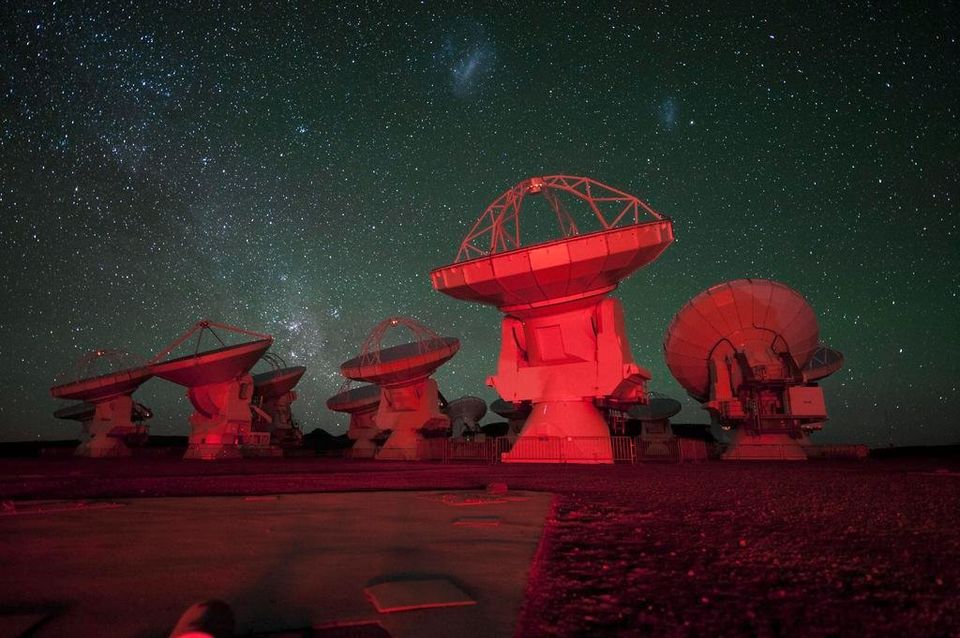Sometimes science can be beautiful. Just take a look at this image released by the huge new ALMA telescope in Chile. It reveals enormous gobs of cold, dense gas blasting out from the Sculptor Galaxy that may hold clues as to why astronomers have had trouble finding high-mass galaxies that theories predict should exist, according to a new study.
Story continues below.

The different colors represent different emission intensities, or amounts of gas released -- purple corresponds to the brightest, most intense gas emissions and red is the least intense.
The Sculptor Galaxy, also called the Silver Dollar Galaxy and more formally known as NGC 253, is a spiral-shaped galaxy located 11.5 million light-years away from our solar system. It has been classified as a starburst galaxy because it forms stars at a very high rate. It was discovered in 1783 by Caroline Herschel, an astronomer whose brother and collaborator, Sir William Herschel, discovered infrared radiation.
And now the ALMA (Atacama Large Millimeter/sub-millimeter Array) telescope, newly inaugurated in March 2013, has revealed new secrets by detecting radio wave emissions from the galaxy, which have been converted into the three-dimensional visualization above.
“With ALMA’s superb resolution and sensitivity, we can clearly see for the first time massive concentrations of cold gas being jettisoned by expanding shells of intense pressure created by young stars,” study co-author Alberto Bolatto, astronomy professor at the University of Maryland, said in a written statement.
The galaxy expels gas when the newborn stars kick out radiation and strong winds. The researchers found that the galaxy expels almost 10 times the sun's mass in gas every year. Meanwhile, the galaxy might run out of gas in 60 million years. This could starve future generations of stars, preventing them from having the fuel they need to form, and ending the galaxy's starburst.
This finding could help explain why computer models have predicted that older galaxies should have higher masses and more stars, but astronomers have not been able to observe them.
The research was presented in a paper and published in the July 25, 2013 issue of Nature.
Check out the video below to see the visualization rotate to different viewpoints.
